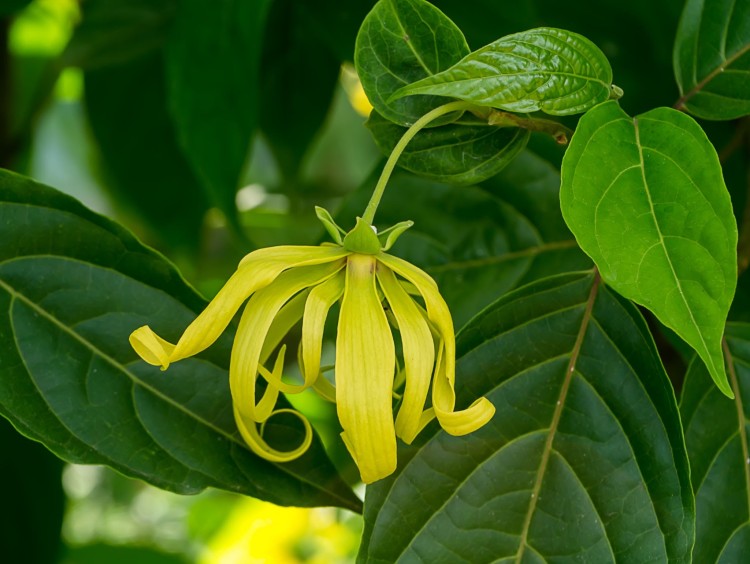
Ylang-Ylang, also spelled ilang-ilang, also called perfume tree, (Cananga odorata), South Asian tree of the custard apple family (Annonaceae), in the order Magnoliales. A penetrating but evanescent perfume is distilled from its flowers.
Native to the islands of the South Pacific, ylang ylang trees produce deeply fragrant yellow blossoms that only bloom at night. For centuries, ylang ylang essential oil has been valued for its calming, uplifting properties and its sensual, soothing aroma.
Ylang ylang trees are native to Philippines, Malaysia and Indonesia, and are grown in Madagascar, Polynesia, Melanesia, Micronesia and the Comoros islands. Ylang ylang trees can also be grown in conservatories in temperate climates. Ylang ylang trees are fast growing, and usually reach an average height of 12 metres (40 feet), although some trees can grow to 42.5 metres (140 feet). When a tree is grown for essential oil production, farmers will prune it so stays shorter and flowers can be easily reached. Ylang ylang trees need lots of sun to grow, and are happiest in rainforest conditions. The trees have smooth, glossy green leaves and are often covered in fragrant flowers. When grown from seed, it takes 3-4 years for the ylang ylang to start blooming. At first, it will bloom twice a year; as the tree matures it will bloom almost constantly.
Ylang Ylang flowers release their most intense fragrance at night, to attract the night-flying moths that pollinate them. In order to capture the fragrance at its peak, ylang ylang flowers are picked at sunrise and then steam-distilled right away. At the peak of blooming season, pickers may gather 25 to 40 kilograms (55 to 88 pounds) of flowers per day.
It takes about 200 pounds of flowers to make 1-2 litres of oil. Like olives, ylang ylang flowers can yield additional oil with more processing. The first, most intense distillation of the flowers is called “ylang ylang extra”. This most fragrant distillation is usually reserved for the perfume industry. The flowers can be distilled 3 or 4 more times, with the last, weakest distillation often used to make scented soap. Ylang ylang essential is often labelled based on its distillation number: for example, the oil gleaned from the second distillation would be labelled “ylang ylang II”.
Ylang ylang is used in beverages, candies, chewing gum, and even ice cream! In Madagascar, ylang ylang is a common ice cream flavour, and sometimes this treat can be found in specialty ice cream shops around the world.

|

|
Currently, there are no comment.
Login to comment